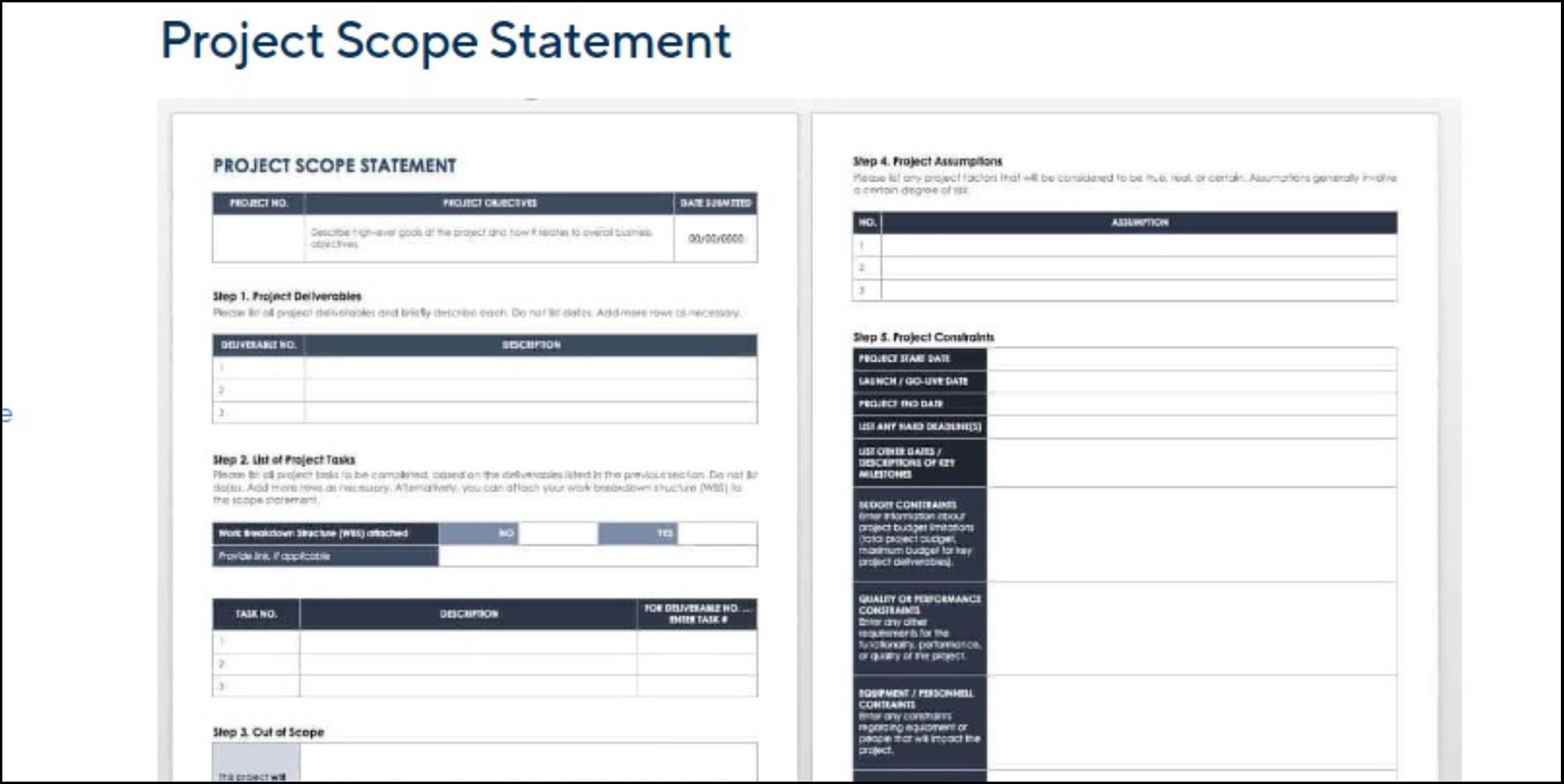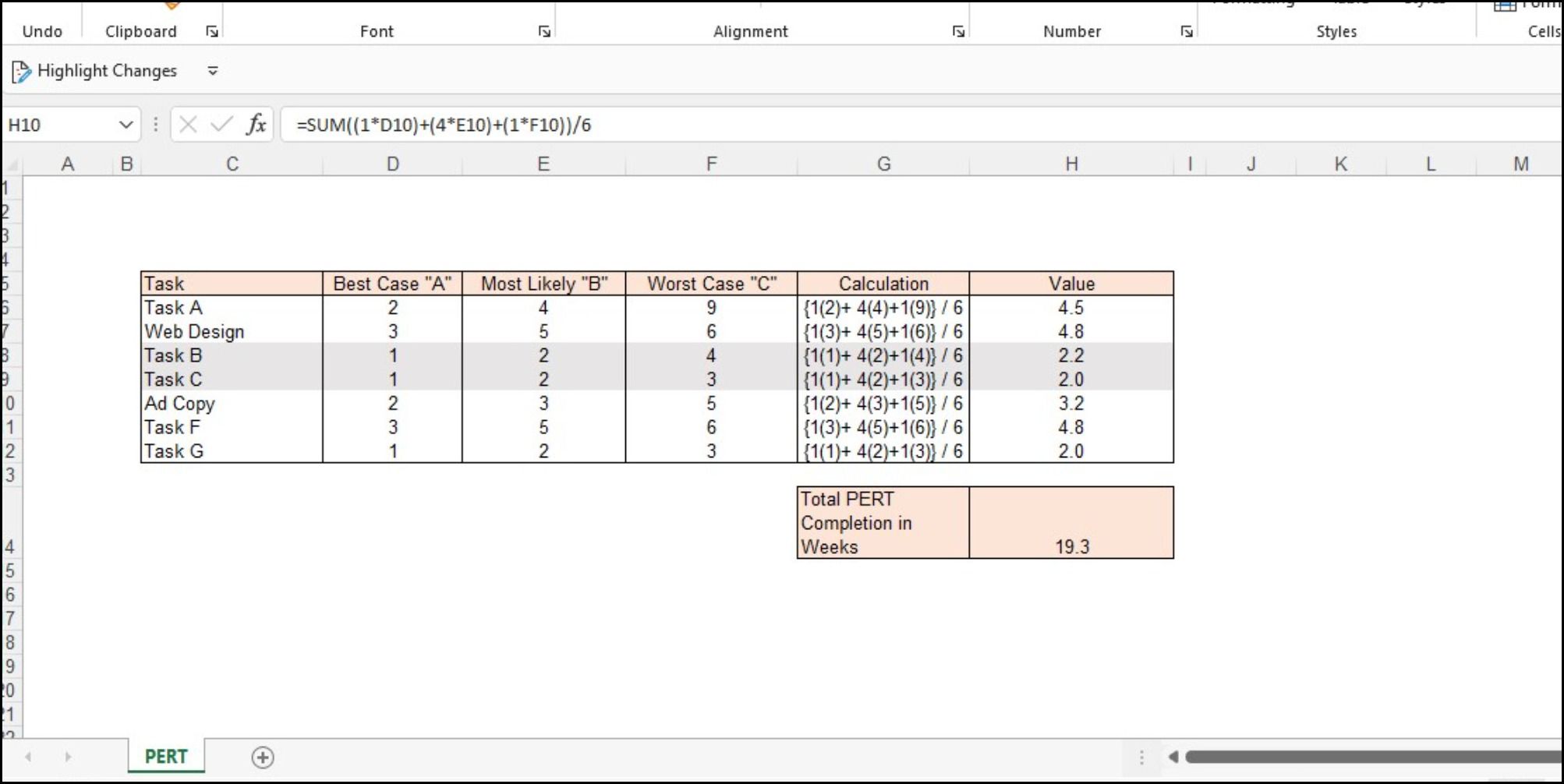
When it comes to time estimation and freelance project management, the most important thing is to accurately track your work hours. It’s important that you know your project well to confidently give your clients a realistic estimate of how long a particular task will take.
After all, you don’t want to find yourself overcharging or undercharging your clients. Let’s take a look at some of the pointers you should keep in mind while doing so.
1. Define Your Project Scope
The first step is to make sure you have a firm grasp of what the project will entail. Figure out exactly what tasks, deadlines, and budgets you’ll be handling. Having a concrete understanding of the scope and tasks involved will help you steer clear of any unnecessary expenses.
Beware of scope creep. If you’re not careful, your project will likely extend longer than you initially anticipated. The best way to avoid this is by having a Work Breakdown Structure (WBS) to map out all tasks in detail, and streamline your workflow with your client effectively. You can also use a project scope template for this purpose.
Download: Smartsheet (Available as an Excel file)
2. Use a Proper Time Estimation Technique
At all costs, you should try to avoid under and over-estimation. Many freelancers tend to quote their hourly rate when determining the value of work done, but this can either lead to inflated invoices or even undercharging for your time—especially if you have not taken into account contingencies, resource constraints, and other factors. Here are some methods to estimate project hours accurately:
- Expert Judgment: This is necessary in cases where data are difficult or impossible to measure, or where detailed specifications aren’t exactly available. The key to using this technique is to obtain as much information and analysis as possible before making a decision. You should use this method to identify the sub-tasks and their duration in the efforts estimation and time forecasting stage.
- Analogous Estimation: Analogous estimation is a common practice that involves using a project(s) with similar features as a base for your estimate. You can use previous experience, industry averages, or other resources to help you with this process. Essentially, analogous estimation uses historical data from similar projects in order to make an estimate.
- Three-Point Estimation: This method involves determining all possible scenarios (optimistic, pessimistic, and most likely), as well as their probabilities of occurring, and then coming up with a final estimate. It is commonly calculated using the triangular distribution technique or PERT beta estimation.
When using the triangular distribution method, you can take the mean of the following estimates—the optimistic estimate (O), the pessimistic estimate (P), and the most likely estimate (M). So, the triangular distribution equation will look like this:
E= (O+P+M)/3
PERT stands for “Program Evaluation and Review Technique”. It’s a decision-making model that helps groups prioritize their work by determining how much time they need to complete different tasks.
The PERT beta distribution method is more of a weighted average. It gives more weight to the most likely outcome and less weight to the other outcomes. Project managers commonly use this method to estimate project completion dates, as it tends to be more accurate.
The PERT Beta equation can be estimated in the following manner:
PERT Beta Distribution = (P + O + 4ML ) / 6
Following our example above, let’s say that in the case of a freelancer working on Task A (which happens to be a social media campaign) the most optimistic estimate is two weeks, and the worst-case scenario is nine weeks. The most likely estimate is four weeks.
Applying the PERT beta equation, the approximate time estimate would turn out to be 4.5 weeks. Using this method, we can also account for standard deviation in this case to give our clients a broader completion time. For Task A, we can express it as below:
Standard deviation = (P-O)/6 = (9-2)/6 = 1.75
This works out to 1.75 in our example. Hence, we can give a probable completion window of 6.25 weeks, instead of 4.5 weeks.
- Bottom-Up Estimation: The simplest (and most accurate) method to calculate freelance project hours is the bottom-up estimation approach. This approach suggests that you start at the very base of your work breakdown structure, tallying up all expenses and then adding as required.
With this approach, you can create accurate estimates by starting at the bottom and working your way up through each cost on your project scope. It helps you to have all the costs covered in one go.
3. Calculate Your Fudge Ratio
Since all freelancers don’t work in the same way, it may be hard to measure how much time they spend working on a project. In such cases, using a fudge ratio calculator can help you calculate accurate estimates. It helps you see the proportion of time over/underestimated, so you can optimize your billable hours.
For example, if you estimate that it will take you four days to finish a project, but it takes you only two days, then your fudge ratio is 2:1. The goal of the fudge ratio is to determine how quickly you can move through tasks in your project and how much slack you have in your schedule.
4. Account for Idle Time and Breaks
You might think that you can simply add up the hours you put in, but that’s not really how it works. Vacation days and idle times should be factored into the total hours you plan on working.
If you don’t take breaks, you’ll end up burning out faster than anticipated. If you’re using collaboration tools such as Slack or Todoist, it becomes important to set up a vacation or out-of-office status when taking time off.
If you take a day off, then you should factor it in while calculating the number of hours you plan on working per week. If you have extended idle time or a break at work, then it’s worth noting that as well—simply add an hour or two to your total hours worked each week.
Download: Vertex42 (Available as an Excel file)
5. Factor in Planning, Contingencies, and Revisions
One of the most common mistakes freelancers make is not accounting for planning time. Similarly, contingency estimates are necessary to account for unforeseen circumstances that may arise during the course of a project—for instance, resource constraints.
- Planning: You’ll need time to plan your work and make sure that you’re getting all the information you need from clients. This is especially important when working with clients who are new to your industry or who’ve never worked with you before.
- Administration: You’ll need time for administrative tasks like sending invoices or setting up social media accounts. You may also need time for client follow-ups after projects have been completed.
- Contingencies/Revisions: If a project takes longer than expected or if something goes wrong with a project, you may need additional time for administrative tasks or making additions or revisions.
Time tracking is a great way to get a better understanding of how much time you’re spending on each project. You can use tools like project timeline templates or timesheet templates and time tracking apps to ensure that you’re getting proper data about how long it takes you to complete tasks.
You’ll also find that setting up a system for time tracking, such as the Pomodoro technique, will help you increase productivity, keep track of your progress, and make sure that you’re meeting deadlines.
7. Review Your Final Estimates
You’ve finished your estimate, and now it’s time to make that final number. One of the things you’ll need to do here is to review your estimate. Check whether any tasks were omitted from the estimate. If so, add those extra hours back into the final estimate. Using a variety of project management templates might help.
If you have an estimate from your client, review it to make sure that the numbers are within reason. If there’s a discrepancy between your two estimates, ask them for more details about what they want and how they want it done.
Evaluate and Manage Your Billable Hours Accurately
The topic of project hours is a contentious one for freelancers, as each person will have their own rate (based on experience, subject expertise, client demands, etc.) and problem-solving methodology.
If you’re planning on calculating your freelance billable hours, then knowing these tips and tricks will be invaluable. Hopefully, they’ll save you time and money on your next project—and make the whole process much less stressful.





